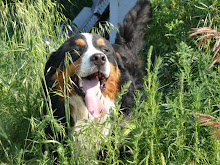
Animal Rights. Where did it come from, where is it now, where is it going?
Part 2
Royal Society for the Prevention of Cruelty to Animals (RSPCA)
For about 140 years the RSPCA animal welfare advocates had made good headway in getting legislation passed to prevent the abuse of animals, but there was still a long way to go.
Those who supported animal welfare were largely the middle and upper classes, people who had a vested interest in treating animals well, farmers, hunters, fishermen, kennel and stable owners and, of course, the ever increasing number of pet owners.
In the middle years of the twentieth century there were stirrings towards a new doctrine, the philosophy that animals should not be used for the benefit of humans but that they are entities in their own right and deserve equal consideration with humans.
The Hunt Saboteurs (HSA)
The AR movement as we know it today is a far cry from the small band of friends, who, in 1963, led by John Prestidge, actively disrupted fox hunting in Devon, England.
The Hunt Saboteurs Association, as they called themselves, always acted within the law, they were an irritant to the huntsmen, and little else.
As others in the area heard about their activities, Hunt Saboteur groups began to spring up all over Southern England.
Band of Mercy
By 1971 there was a national network of dedicated activists disrupting hunt meets all over the country. Two of these activists were a law student called Ronnie Lee, and his friend Cliff Goodman, from Luton, Hertfordshire. They thought they could do a better job if they could prevent the hunt from happening in the first place, as the HSA only operated within the law, and their new tactics would involve law breaking, they formed a breakaway group, the Band of Mercy, in 1972.
All went well and the BOM spread their wings to include action against vivisectionists, as well as hunters. However, in 1975, their luck ran out and Ronnie and Cliff were convicted of arson and sent to jail.
Animal Liberation Front (ALF)
On their release, Cliff decided to give up the campaign, but Ronnie was more determined than ever. He got in touch with the other members of the BoM and told them he wanted to form a group that would fight for the liberation of all animals. They called the new group the Animal Liberation Front, ALF and the animal rights movement was born.
Where animal welfarists were mostly drawn from the middle and upper classes and those who had animals in their daily lives, the new AR movement drew its followers mostly from the working class and from urbanites who had little if any contact with animals except in the form of domestic pets. Of course, there were exceptions on both sides.
ALF's objective, in its own terms, is to end animal abuse. They do this by 'liberating' animals from exploitative situations, such as in fur farms, and laboratories where they are used for experiments, and by causing financial damage to 'animal exploiters.'
According to the group's current website, ALF's mission is to "effectively allocate resources (time and money) to end the "property status of nonhuman animals." The objective behind the mission is to "abolish institutionalized animal exploitation because it assumes that animals are property."
According to the ALF, "Because ALF actions may be against the law, activitsts work anonymously, either in small groups or individually, and do not have any centralized organization or coordination." Individuals or small groups take the initiative to act in the name of the ALF then report their act to one of its national press offices. The organization has no leaders, nor can it truly be considered a network, since its various members / participants do not know each other, or even of each other. It calls itself a model of 'leaderless resistance.'
There is a certain amount of ambiguity about the role of violence for the group. ALF pledges its commitment to not harming either 'human or non-human animals,' but its members have taken actions which can justifiably be considered as threatening violence against people.
Concern for animal welfare has a history stretching back to the late 18th century. Historically, animal protectionists, as they were once known, focused on ensuring that animals were treated well, but from within a humanist framework that envisions humans as responsible for (or as biblical language would have it, with "dominion over") the earth's other creatures. Beginning in the 1980s, there was a noticeable shift in this philosophy, toward an understanding that animals have autonomous "rights." According to some, this movement was essentially an extension of the civil rights movement.
Indeed, one of the participants in a 1984 break-in at the University of Pennsylvania to retrieve animals used in scientific experiments, said at the time that, "We may seem like radicals to you. But we are like the abolitionists, who were regarded as radicals too. And we hope that 100 years from now people will look back on the way animals are treated now with the same horror as we do when we look back on the slave trade" (quoted in William Robbins' "Animal Rights: A Growing Movement in the U.S.," New York Times, June 15, 1984).
Animal rights activists have been becoming increasingly militant since the mid-1980s, and increasingly willing to threaten people, such s animal researchers and their families as well as corporate employees. The FBI named the ALF a domestic terrorist threat in 1991, and the Department of Homeland Security followed suit in January, 2005.
Peta and the future of animal rights coming in part 3




